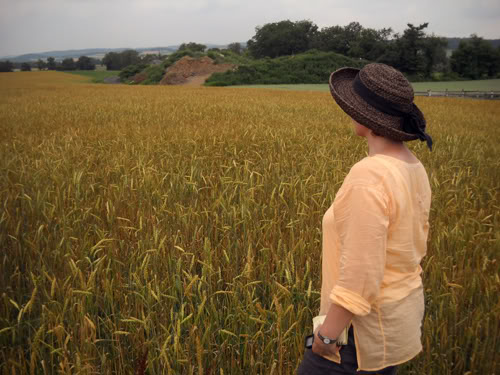
That’s me in late June, notebook in hand, looking out over a lush, thriving field of wheat at The Rodale Institute in Kutztown, Pennsylvania. I was there to witness in person the experiment cooked up by Dave Poorbaugh of Daisy Flour, to reintroduce to the market the same varieties of wheat that were grown in the mid-Atlantic in Colonial times. I wrote about it for the Washington Post, and I promised you pictures. It took me a while (oy, Photoshop troubles!), but here they are.

That’s Dave on the left and Jeff Moyer, the Institute’s farm director, on the right. I loved both these guys—Dave you just want to hug, he’s so gosh-darn nice, and Jeff is exactly what I think of when I imagine an organic farmer. He looks all down-home, but beneath that cap is a brain stuffed with science and instinct.

At the Institute, the chickens really are free-range.

Dave and Jeff were working on seven varieties of wheat, each planted on five acres of pristine farmland. This blown-over field of Lancaster Red was the only one that showed any sign of weather damage.
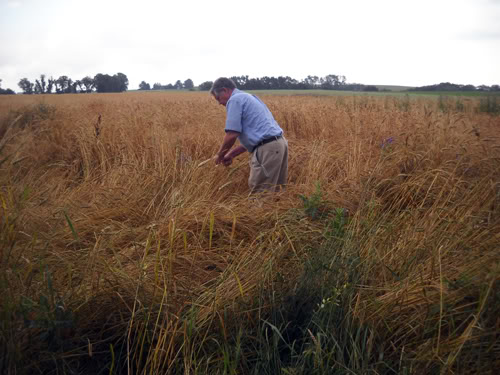
Before any wheat can be milled, it must be tested for various molds and toxins. At each field, Dave waded out into the wheat to snip some samples for early testing.

Lancaster Red, nearly ready for harvest.
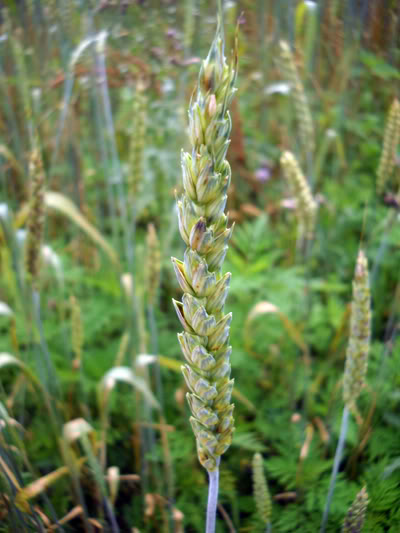
See how green the Red Fife looks in contrast? It was planted several weeks later than the rest.
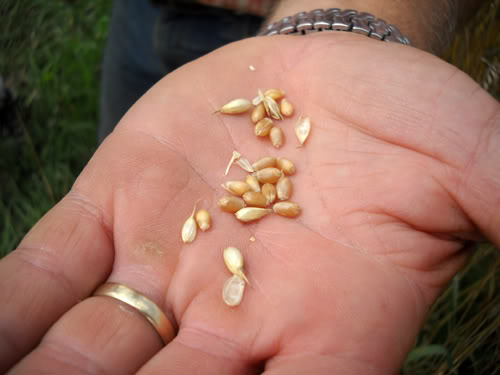
A handful of wheat kernels—this is what will be milled. (Dig the calluses on farmer Jeff’s hand!)
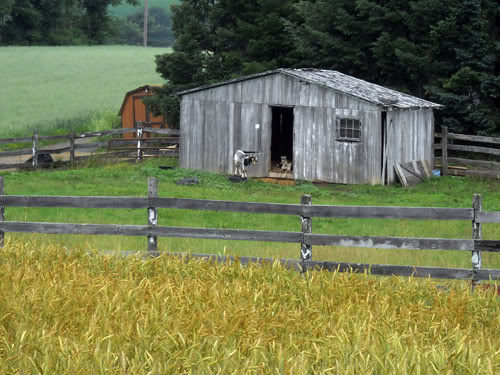
These goats don’t have anything to do with the story. I was just feeling swept away by the rural grandeur.
I’ve got loads more to share with you, from the Lightning McQueen cake I made for Harry’s birthday party to a food tour of midcoast Maine. (If you’re a Facebook fan, you’ve already seen what I’m talking about.) Now that I’ve got my Photoshop up and running, expect regular updates!
